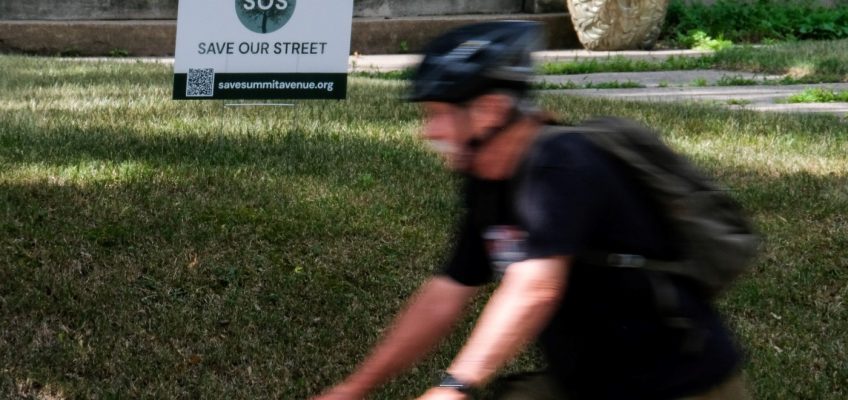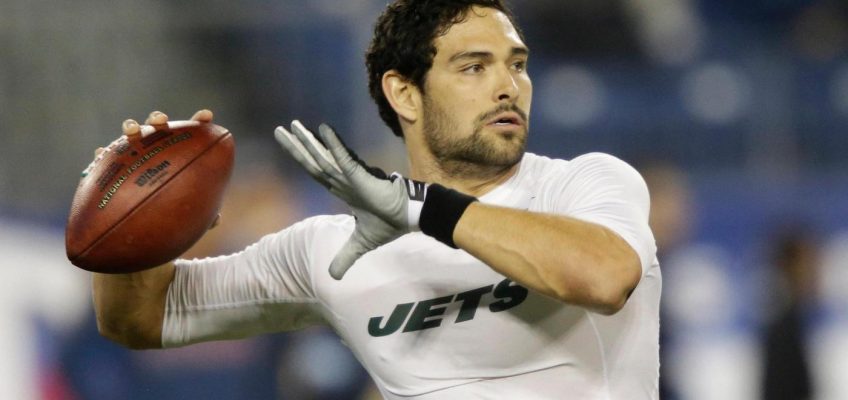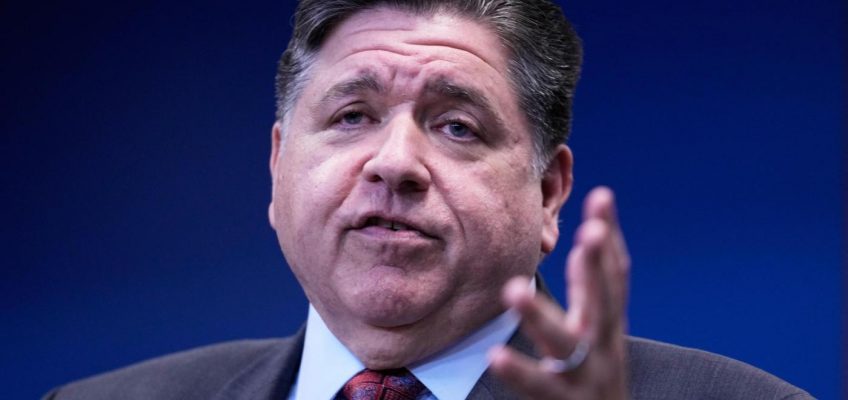Asked about a long-proposed protected bike trail along Summit Avenue, state Rep. Kaohly Her told a wall-to-wall audience that she was not ready to call for its cancellation, but she was skeptical of the city-driven process that led to its greenlighting. Why would such a major bicycle infrastructure project roll out on the city’s wealthiest street while poorer areas like the East Side go without?
“The question being asked is flawed because you’re asking me to make a decision on planning from a group of people who handled it very poorly,” said Her, during a forum Monday evening that drew the five candidates for St. Paul mayor to Highland Park.
“Is it because we don’t care about Black and brown people who need their infrastructure updated? … Why was it designated as a regional trail? Who designated it? Who wanted it?” said Her, who said city staff had given her only vague answers about planning that had pit cyclists against homeowners. “I will look at the project and reevaluate it.”
Asked by forum moderator Tane Danger if she at least agreed with the mayor’s claim that Summit Avenue needs a full reconstruction no matter what amenities are added, Her elicited a mix of widespread laughter and clapping with her response: “All of our streets in St. Paul need to be redone.”
She was immediately met with a wry laugh and under-his-breath condemnation — “That’s an (expletive) answer” — from fellow mayoral candidate Adam Dullinger, a licensed professional engineer who lives by the Grand Round bike path along Wheelock Parkway.
Pressed by Her and the moderator, Dullinger soon apologized but emphasized that in order to provide safe transportation to destinations across the city, bike trails need to be connected in a complete network, and Summit Avenue is an important and underdeveloped east-west corridor linking downtown to points west.
“Her whole point is to dismiss Summit Avenue as this equity thing,” said Dullinger, noting select parts of the East Side have superior bike infrastructure to areas such as Summit Hill and Snelling Avenue. “We need to build bicycle infrastructure everywhere in this city, and Summit Avenue is a fantastic place to do it. It’s very central.”
Hilborn, Chen opposed
Dullinger said he bikes daily across the city and as far west as Plymouth but had to drive to the mayoral forum from his North End home because there was no safe route to or down Snelling Avenue. In contrast, he said, “if you look at the Grand Round, it goes through the East Side, and that’s what gives me the opportunity to go to the grocery store on a bike.”
The long-planned Summit Avenue project, which has been fought in court by avenue homeowners and other opponents, has drawn dueling estimates of tree impacts, costs and other details, with critics claiming it will remove more trees than a more straightforward road reconstruction. Many cyclists see the avenue — which is believed to host the longest stretch of Victorian mansions in the country — as a key east-west corridor in an underdeveloped citywide bicycle network short on direct, cross-town bike routes.
Asked to explain in simple yes or no terms whether they supported the protected five-mile bike trail along one of the city’s most celebrated streets, the five candidates for St. Paul mayor offered sharply distinct answers during one of their latest candidate forums, which was organized by the Highland District Council, FairVote Minnesota, Danger Boat Productions and others at Gloria Dei Lutheran Church on Snelling Avenue.
A recording is available online on the St. Paul Neighborhood Network’s YouTube channel.
The prospect of a five-mile bike trail running mostly at sidewalk level along Summit Avenue struck mayoral candidates Yan Chen and Mike Hilborn as a definitive non-starter.
“It’s just the wrong priority for the wrong time,” said Chen, a biophysicist who has called for the city to control spending by refocusing on core needs. “The bicycle plan is not tied into our transit plan. … There’s a bus plan. There’s a housing plan. Everything needs to be tied together.”
Chen said Summit Avenue’s existing bike lanes could be touched up or modified here and there. Otherwise, “there are so many other infrastructure projects we can deal with,” she said.
Hilborn, who owns a power washing and snow plowing company, said Grand Avenue needs more attention and repair. “Summit Avenue has a bike lane, both directions,” he said. “Drive down it, and it’s one of the smoother streets in St. Paul. … If we have a tax problem, a crime problem and a homelessness problem, I don’t think we need to try to fix something where we already have a bike lane there already.”
Mayor, Dullinger both on board
St. Paul Mayor Melvin Carter and Dullinger both said they were fully on board with the Summit Avenue trail.
“Life has just gotten more expensive,” Carter said. “Being able to commute in this city … without the cost of car ownership is absolutely essential for our future. … The tradition that I grew up in, running to the DMV to get your driver’s license as soon as possible, isn’t what our teenagers are up to today.”
“We have to reconstruct Summit,” Carter added. “Taft was the president the last time we reconstructed Summit. And it’s not just about the pavement. It’s about the water main underneath.”
Her said the argument that Summit Avenue needs a sidewalk-level bike trail because its underground utilities are old struck her as a tacked-on rationalization after initial arguments hit opposition. “Marshall is the better connector between Minneapolis and downtown, and … they have old infrastructure,” she said.
Dullinger reiterated that a solid east-west and north-south bike path network needs to be accessible to families “for our kids, for affordability, for everyone to have freedom of movement throughout our city.”
“Right now it feels like kids are just isolated in their homes, and they have to be chauffeured to any place they want to go and part of that is just because it’s dangerous,” he said. “It’s important to have that be a safe infrastructure across the city.”
Nov. 4 election
The Nov. 4 election will be decided by ranked-choice ballot, allowing voters to rank all the candidates in order of preference for what will be a three-year term as a result of the city’s transition to even-year elections.
Another mayoral forum was scheduled Tuesday night by the Coalition of Asian American Leaders. More information is online at facebook.com/CAALMinnesota.
Related Articles
Cole Hanson: Weak enforcement, scattered resources can put recourse out of reach for St. Paul renters
Dillon Donnelly: Why is St. Paul building rec centers while families can’t afford rent?
As some big names sit out St. Paul mayor’s race, others ponder city’s challenges
St. Paul: Highland District Council, other groups to host mayoral forum
DOJ sues Minnesota, St. Paul, Minneapolis, Hennepin County over immigration enforcement




